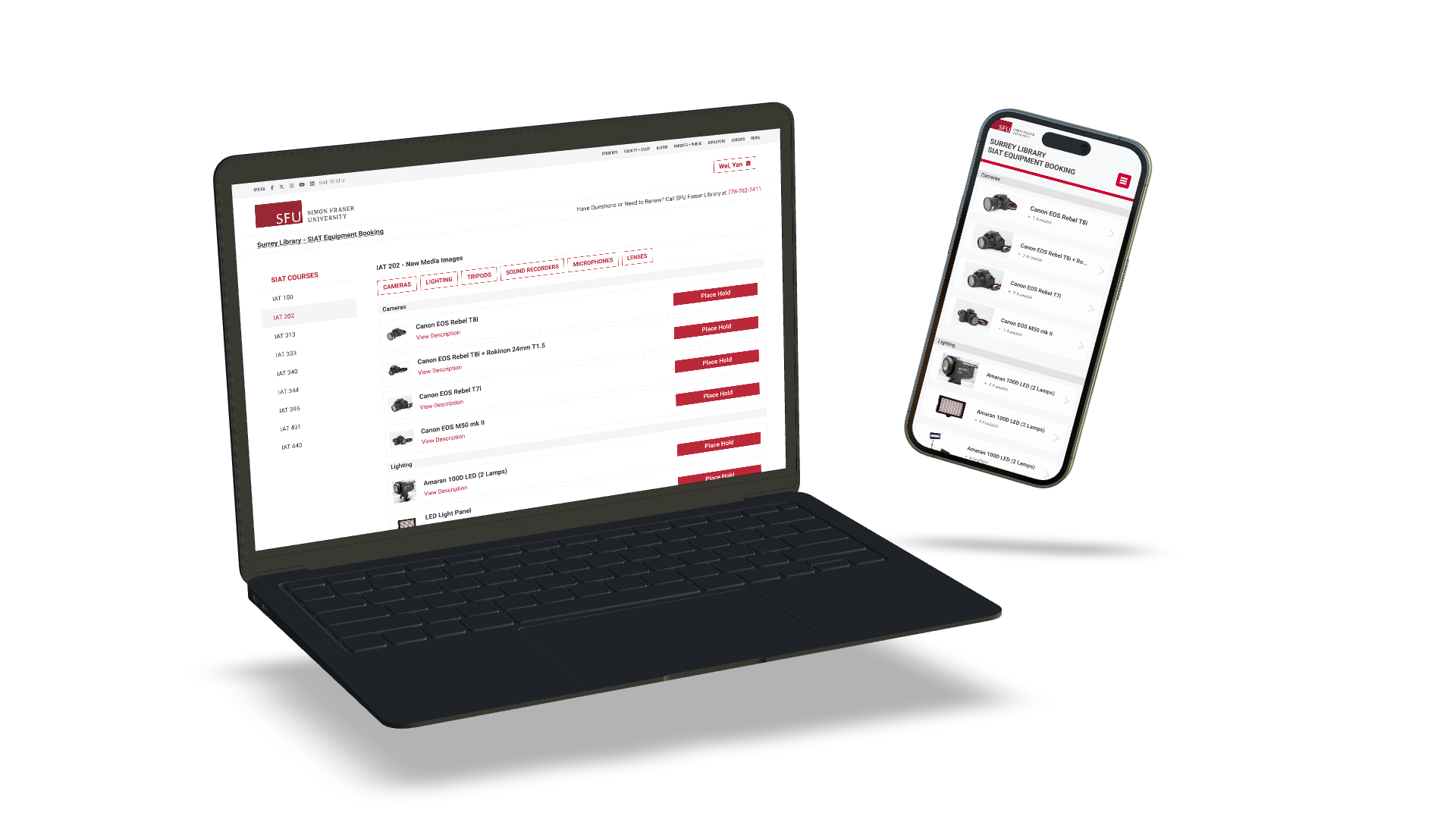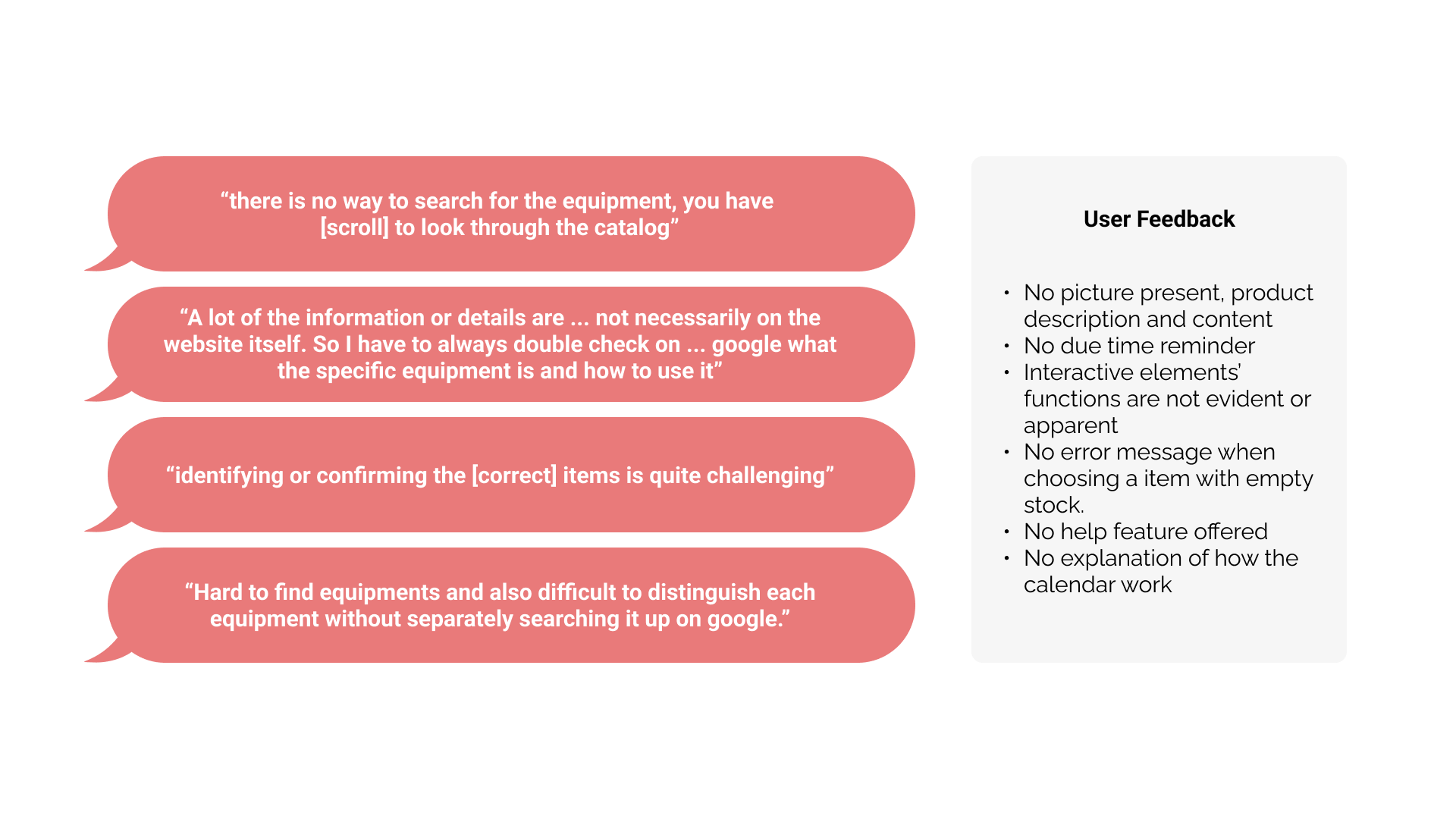





The SIAT Equipment Booking systemenables SIAT students to borrow equipment ranging from cameras, microphones, lighting kits, and more from the library to support their courses. We received an offical invitation from the library to collaborate on a program to upgrade the existing system, where we applied heuristic evaluation and observational usability studies to study the system and to validate the effectiveness and user satisfaction of the solutions and website design prototypes we proposed.
Instructor: Hanieh Shakeri
Team Members:
Walter Xu ( QA Lead / Data Analytics Lead / Ideator )
Jasper Ling ( Researcher / Prototype Lead )
Yan Wei ( Researcher / Studies Lead )
Jieensi Aibaer ( Ideator )
Time: 6 weeks (March - April 2024)
The SIAT Equipment Booking system, created by the IT team over 20 years ago, serves the specific needs of SIAT students. As the library prioritizes other resources, this system was designed to move away from paper-based borrowing and primarily functions as a tracking tool to ensure sufficient equipment availability for students.
However, several usability issues were found due to it being an external system. In response, the library is redesigning the system and highly values the feedback from students. Consequently, the library invited us to conduct a comprehensive study of the system, using the data we gathered to inform and enhance the redesign process.

Previous Interface Design
We use Jakob Nielsen's 10 general principles for interaction design to categorize the issues found. This allows us to gain a deeper understanding of the existing issues. By systematically applying these principles, we can identify specific areas of system deficiencies and sets the stage for subsequent user testing.

Affinity Diagram of Identifing Issues
After having our finding, we design a heuristic evaluation study for the participants. I tried to using the well-designed tasks to push users to interact with the website as fully as possible. At the same time, I designed 3 tasks that hard or cannot be accomplished in the booking system to test what are the reactions and responses users have. After they meet the problems, we asked them what they thought about it through an post questionnaire.
Since the system is specifically designed to meet the borrowing needs of SIAT students, I summarized and categorized this user group into a persona. By creating this persona, my group can better understand the needs, pain points, and motivations of our target users. This persona effectively represents the characteristics of the target audience, providing crucial guidance in the design and improvement of the equipment booking system.

User Persona
▶ Pre-Study questionnaire
▶ Post-Study questionnaire
Our analysis of the SIAT Equipment Booking System highlighted significant user experience issues. Most participants reported infrequent use of the system, with the majority indicating they never or rarely borrow equipment. Moreover, the user satisfaction levels were generally low, predominantly ranging from 'Not enjoyable' to 'Neutral'. These findings suggest the system is not only underutilized but also fails to engage or satisfy users effectively, pointing to a need for substantial improvements in usability and engagement strategies.

Questionnaire Finding
During the usability testing phase of the SIAT Equipment Booking System, participants engaged in the Think Aloud Method to voice their real-time thoughts and experiences. It allows observers to directly hear the thought processes of users as they navigate through the system. This approach not only confirmed our preliminary investigations into potential issues but also provided a rich, detailed understanding of the actual difficulties users face.

Think Aloud Method
Our competitive analysis of other libraries was conducted with great thoroughness, considering their layout, function, and booking details. The libraries we studied include Fraser Valley Library, Vancouver and Burnaby Public Library pages. This comprehensive analysis forms the basis of our proposed design solutions.

Competitive Analysis
▶ (Figma) Midian Fidelity Prototype
Our group embarked on the potential design solutions together, with each team member contributing their unique ideas for the equipment booking page. In our meeting, we collectively chose the best version, which we upgraded for our final prototype. This collaborative approach ensures that each team member's input is valued and contributes to the overall success of the project.

Prototype Design in Figma